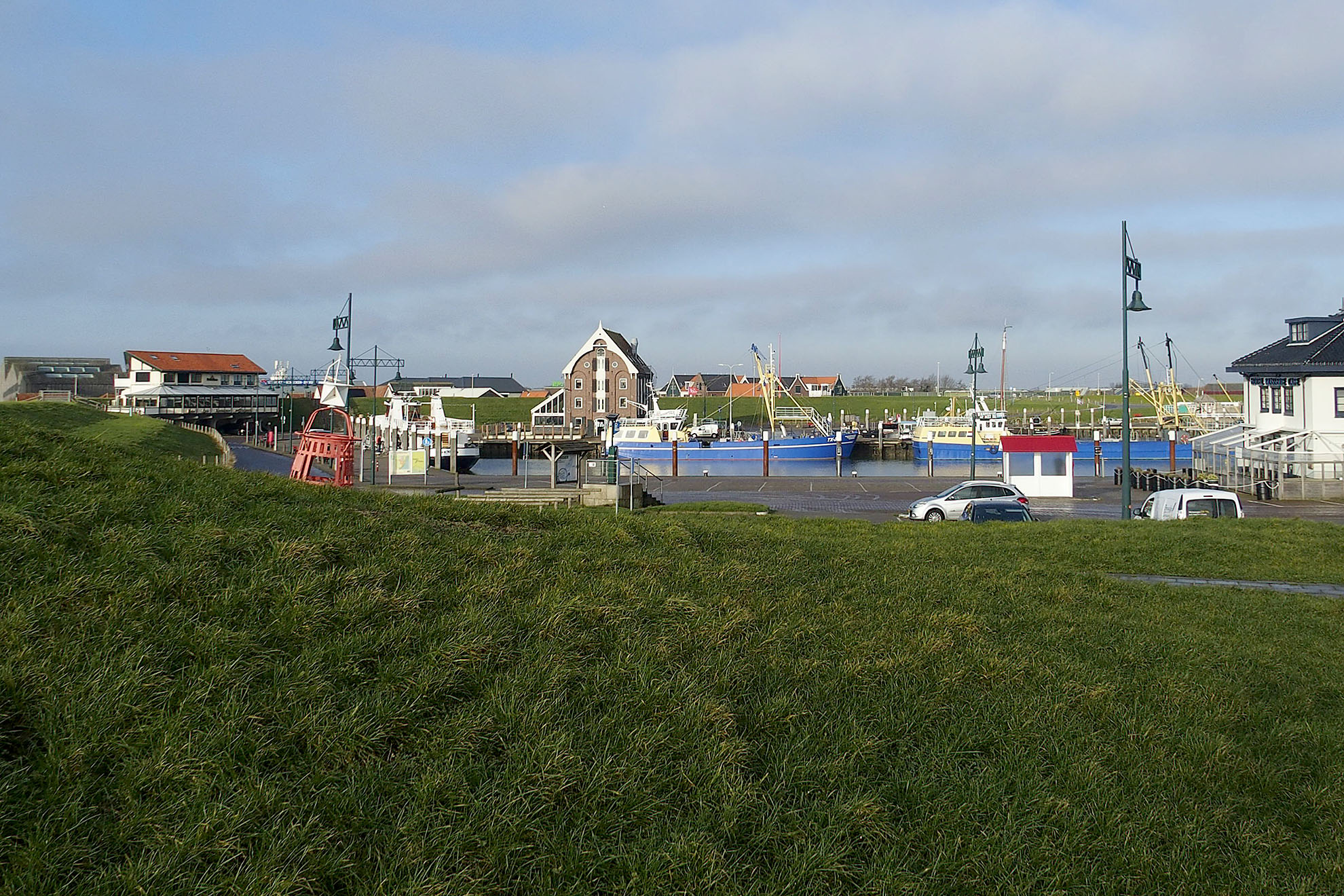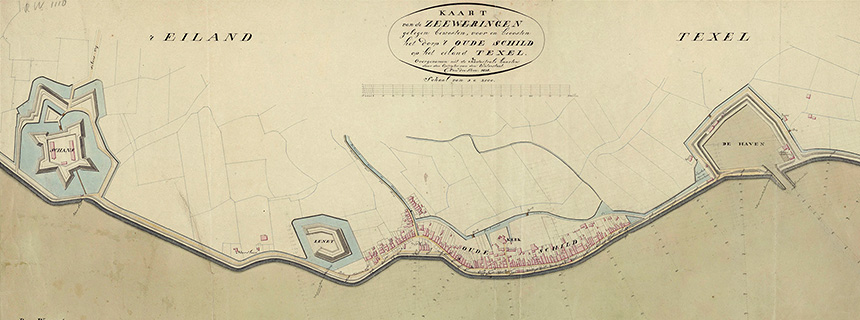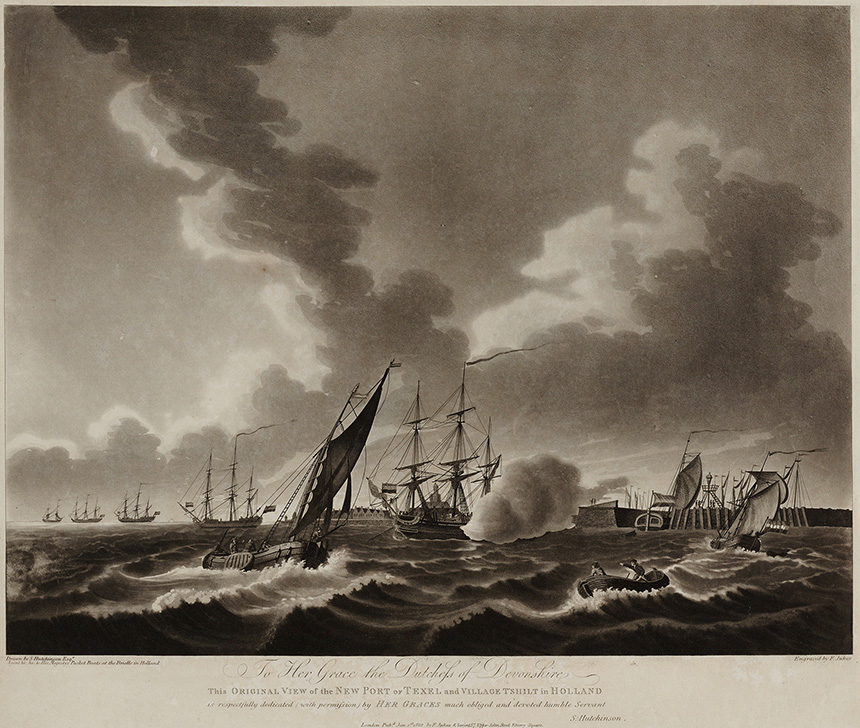De eerste haven

De haven van Oudeschild werd kort na 1780 aangelegd. Hij was bedoeld voor de kleine zeilvaart: vissers, loodsen en kleine vrachtschepen. De kleine zeilscheepjes meerden voor de aanleg van de haven aan op de waddenstrandjes. Het laden en lossen was daar behoorlijk omslachtig. In een haven gaat dat veel makkelijker. Bovendien bood een haven beschutting bij storm. De grote zeeschepen hadden geen haven nodig. Die gingen voor anker op de Reede.

Den Berger
Leendert den Berger heeft lang strijd moeten voeren voor het aanleggen van een haven op Texel. De invloedrijke kooplieden uit Amsterdam waren er fel op tegen. Ze wilden niet dat Oudeschild zou uitgroeien tot een handelsstadje. Maar Leendert won het pleit. Om geld te verzamelen voor de aanleg van de haven werden obligaties uitgegeven. Zo konden ook vermogende Texelaars een steentje bijdragen.
De plek

Ten tijde van de aanleg van de haven was het dorp Oudeschild nog een stuk kleiner dan het nu is. De haven is een eindje ten noordoosten van dit oude dorp uitgegraven. Den Berger maakte daarbij gebruik van een plas die was ontstaan bij een eerdere dijkdoorbraak. Lading en passagiers moesten vanuit de haven wel via het dorp naar andere plaatsen op Texel, want de Schilderweg bestond toen nog niet.
Toevluchtsoord

Al snel na de openstelling bewees de haven zijn functie als toevluchtsoord. Tijdens een zware storm zochten veel zeilschepen hun toevlucht in de nieuwe haven. Daarbij viel op dat de ruime havenkom goed berekend was. Zelfs een grote ‘lichter’ (binnenvaartschip) kon met volle zeilen de haven binnenlopen en, eenmaal binnen, op het zeil naar een ligplaats navigeren.
Skilsloot doorgetrokken
Tijdens de aanleg van de haven was de handel in Texels drinkwater ten behoeve van de zeeschepen nog steeds van betekenis. Daarom werd de Skilsloot na de openstelling van de haven doorgetrokken. De pramen met vaten water konden op die manier vanaf de Hoge Berg naar de haven doorvaren.
Napoleon
Tijdens de Franse bezetting bedachten de strategen van Napoleon dat Zuidoost-Texel beter verdedigd moest worden tegen mogelijke invallen van de vijand. De keizer zelf schreef in 1811 zijn nôte sur l’Ile de Texel, waarin hij onder meer opdracht gaf om de haven van Oudeschild te laten omgeven door een hoge muur, compleet met bastions, geschut en een fortgracht. Vanwege geldgebrek is dit plan op de wat langere baan geschoven. Na de val van Napoleon bij Waterloo is het er nooit meer van gekomen.
Verzanden...
In de loop van de negentiende eeuw nam de economische bedrijvigheid op Texel enorm af. De openstelling van het Noordhollandsch Kanaal in 1824 was de nekslag voor de functie van de Reede als buitenhaven van Amsterdam. De schepen konden vanaf toen via het kanaal naar de handelsstad getrokken worden. Oudeschild werd een gewoon vissersplaatsje aan de Zuiderzee en de vangsten waren maar al te vaak schraal. In die barre tijden verzandde het westelijk deel van de haven. Er was er geen geld voor de baggerwerkzaamheden. Uiteindelijk werd dit deel helemaal aangeplempt. Later zouden aan deze nieuwe kade pakhuizen en een scheepswerf verschijnen.
...en uitgraven

Ontwikkelingen in de visserij en het op gang komen van de veerdienst naar Texel maakten het noodzakelijk dat in het westelijk deel van de originele haven weer een extra havenkom werd uitgegraven. Later werd een extra werkhaven aangelegd voor de sterk groeiende vloot van Noordzeekotters, voor een droogdok én voor de vrachtschepen die Texelse landbouwproducten vervoeren. En nog later werden in twee stappen de twee jachthavens aangelegd. Daarmee is de haven van Den Berger ongeveer zeven keer zo groot geworden. Nog steeds is het een decor voor tal van activiteiten, en nog steeds is het een haven voor de kleine scheepvaart.








